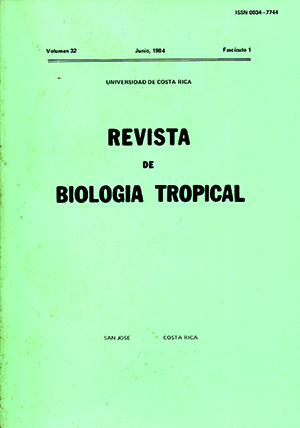Resumen
Varias personas de dos localidades en Costa Rica (San Rafael de Coronado, 1510 m y Dulce Nombre de Tres Ríos, 1145 m, de las Provincias de San José y Cartago respectivamente), fueron picadas por garrapatas, subsecuente mente identificadas como Ornithodoros (Alectorobius) Kelleyi, argásidos asociados con murciélagos. En los áticos de las casas de los pacientes, se encontraron, en el guano, adultos, larvas, ninfas y exuvias. Como no se ha informado de argásidos adultos para Costa Rica, se estableció una colonia de laboratorio para su estudio taxonómico, y para observar la biología de las garrapatas y su asociación con los murciélagos, en este caso particular, Molossidae y Vespertilionidae, ambas familias son especies insectívoras. La colonia se estableció usando tubos de vidrio con yeso en el fondo para dar la humedad adecuada. Tanto el último estadio ninfal como los adultos se alimentan fácilmente de ratones lactantes y en condiciones de oscuridad.
Los períodos de alimentación duran de 20 a 40 minutos, flotándose además, abundante producción de líquido coxal. La oviposición ocurre entre los 1 4 a los 27 días después de la alimentación del adulto.
El estudio de los cortes histológicos de piel de los ratones, muestra lesiones hemorrágicas locales y fuerte edema alrededor de los sitios de las picadas, lo que corrobora la fuerte acción toxigénica de estos argásidos. Se hace una comparación entre las medidas de las estructuras más comunes usadas en la taxonomía de larvas argásidas, tales como la longitud y ancho del cuerpo, hipostoma, basis capituli, palpos, tarsos 1 y placa dorsal, tipo de dentición, longitud y distancia de PH1 y PH2. Tal estudio no reveló diferencias importantes entre especímenes completos y pieles de los mismos. Este hallazgo es importante si se considera que dentro de los hábitos de los argásidos, es más 1 0 1 fácil encontrar en el habitat las exuvias y no los ejemplares vivos.
Citas
Jones, E. K., & C. M. Clifford. 1972. The Systematics of the Subfamily Ornithodorinae (Acarina: Argasidae). V. A. Revised key to Larval Argasidae of the Western Hemisphere and Description of Seven New Species of Orhithodoros. Ann. Ent. Soc. Amer., 65: 730-740.
Kohls, G. M., D.E. Sonenshine, & C. M. Clifford. 1965. The Systematics of the Subfamily Ornithodorinae (Acarina: Argasidae). II. Identification of the Larvae of the Western Hemisphere and descriptions of three New Species. Ann. Ent. Soc. Amer., 58:331-363.
Sonenshine, E. D., & G. Anastos. 1960. Observations on the life history of the bat tick Ornithodoros kelleyi (Acarina: Argasidae). J. Parasitol., 46: 449-454.
##plugins.facebook.comentarios##

Esta obra está bajo una licencia internacional Creative Commons Atribución 4.0.
Derechos de autor 1984 Revista de Biología Tropical


